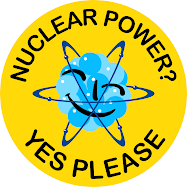It's been over three years and two elections since John Howard pushed for a Nuclear Australia. Since then, we've listened to myriad high profile Australians tell us 'other means' exist to reduce our emissions that are, among other things, every bit as effective and faster than nuclear energy.
A Maplecroft report just released pegs Australia's CO2 emissions due to energy use as an 'Extreme Risk', in the next-to-worst position behind only the UAE. The UAE's recent emission spike due to desalination put them on top; foreshadowing a dire, negative feedback link between climate change and energy demand. Australia's growing reliance on desalination could similarly result in emissions increases from increasing demand.
The UAE is in the process of constructing its first four nuclear energy stations.
A Maplecroft report just released pegs Australia's CO2 emissions due to energy use as an 'Extreme Risk', in the next-to-worst position behind only the UAE. The UAE's recent emission spike due to desalination put them on top; foreshadowing a dire, negative feedback link between climate change and energy demand. Australia's growing reliance on desalination could similarly result in emissions increases from increasing demand.
The UAE is in the process of constructing its first four nuclear energy stations.
Australia, last year’s worst performing nation, remains ahead of USA on per capita emissions with 20.82 tCO2 per person against 19.18 tCO2 per person for the USA. A vast majority of Australia’s electricity is sourced from coal (44.5%), which is a key factor in Australia’s per capita emissions and the carbon intensity of energy in the country, which is 20% higher than the global average. USA (3) and Canada (4) both achieved decreases in emissions per capita of 3.13% and 8.92% respectively, as well as reductions of 1.2% and 7.12% in their annual emissions from energy use. However, both countries remain extreme risk in the index.Consider nuclear energy.














